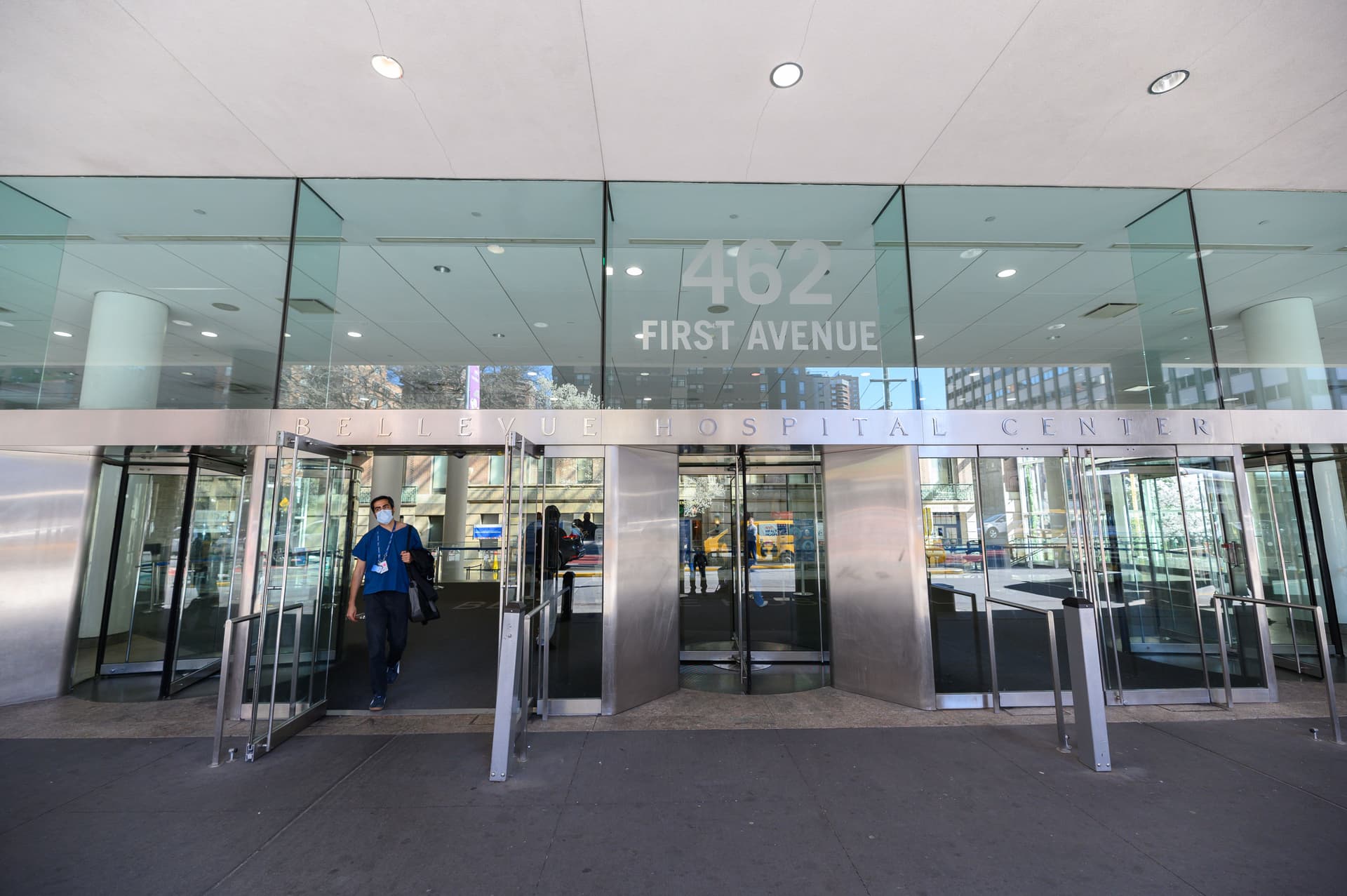NYC Health + Hospitals enrolls 125,000 residents in primary, specialty care program
The growing number of patients enrolled in NYC Care comes as the city struggles to manage tens of thousands of immigrants seeking refuge.

Noam Galai/Getty Images
• 4 min read
More than 125,000 New York City residents have enrolled in a program aimed at diverting patients from costly emergency room (ER) visits and into primary care appointments, NYC Health + Hospitals (H+H) announced this month.
NYC Care—a $100 million initiative former Mayor Bill de Blasio rolled out ahead of his ill-fated 2020 presidential campaign—markets existing city-subsidized healthcare services to people who are undocumented, uninsured, or underinsured so they can receive primary care in a timely manner, rather than wait for a condition to deteriorate and end up going to the ER.
Patients can enroll as a member in the program, which aims to ensure continuity of care. For example, they can choose a primary care doctor, receive preventative services like vaccines and mammograms, and access low-cost prescriptions.
H+H, the city’s public hospital system, also touts that appointments are available in two weeks or less, compared to an average 26-day wait time for primary care doctors in 15 metropolitan areas, according to the Washington Post.
By the numbers
NYC Care members scheduled more than 200,000 primary care visits and nearly 540,000 specialty care visits in 2023, according to H+H. And according to new patient data released last summer that tracked visits from November 1, 2020, through October 31, 2021:
- 76.9% of new NYC Care members showed up for an additional primary care visit in their first year.
- 80.7% received a referral outside of primary care.
- 75.4% visited specialty care.
Of the NYC Care members with two or more chronic diseases, 86.1% returned to primary care, 87.1% received a referral, and 86% visited specialty care, according to H+H.
Patients who speak English as a second language reported similar usage rates, with 86.1% returning to primary care, 80.2% receiving a referral, and 74.7% visiting specialty care, according to the public hospital system.
Navigate the healthcare industry
Healthcare Brew covers pharmaceutical developments, health startups, the latest tech, and how it impacts hospitals and providers to keep administrators and providers informed.
“This data suggests that NYC Care has spurred patient engagement at rates comparable to Medicaid, and that the data reflects member satisfaction and confidence in the high-quality care they are receiving,” according to the H+H announcement from June 26, 2023.
More than 10,000 members with diabetes reported improvements in their hemoglobin A1C readings after at least six months. Likewise, more than 15,000 members with hypertension reported a decrease in blood pressure after six months of receiving care through the public hospital system.
Insurance options
Beyond helping individuals and families who aren’t eligible for the program enroll in health insurance, NYC Care will also help inform undocumented immigrants over the age of 65 about a new health plan that became available in January.
“The new insurance is through Medicaid managed care plans, with a carved-out fee-for-service pharmacy benefit,” according to H+H. “The new insurance adds preventive and primary care benefits, including routine doctor visits, recommended screenings, lab tests, wellness services, prescription drugs and supplies, and more.”
The bigger picture
The growing number of patients enrolled in NYC Care comes as the city struggles to manage the influx of immigrants seeking refuge.
H+H spokespeople didn’t return a request for comment about whether the tens of thousands of new immigrants will be connected with NYC Care, but in written remarks, Deputy Mayor for Health and Human Services Anne Williams-Isom said the city’s promise of healthcare as a human right “extends to our newest New Yorkers.”
“Reaching the milestone of 125,000 enrollees in NYC Care is more than just reaching a new goal,” Williams-Isom said. “It is symbolic of all those individuals and families that now have access to reliable, consistent care.”
Navigate the healthcare industry
Healthcare Brew covers pharmaceutical developments, health startups, the latest tech, and how it impacts hospitals and providers to keep administrators and providers informed.